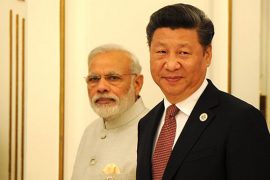Human beings have three basic needs – food, clothing and shelter. And a coconut tree can provide all three. Perhaps that is why it has travelled to many places over the last few centuries.
The word ‘coconut’ comes from combining two words: coco and nut. Coco means “grinning face” in Portuguese. In the fifteenth-century, Portuguese sailors who landed in the Indian sub-continent found that coconuts found in the Indian Ocean had three dots that looked like a weird head. So, they called it Coco.
Before the Portuguese arrived in India, it was called different things by different people. For instance, the Egyptian traveller Cosmas called it “The Indian Nut” when he visited India in the 5th Century A.D. Marco Polo called it “Pharaoh’s Nut’’ when he saw them in India and the Nicobar Islands in the thirteenth century.
In a way, its origins are proof that global trade in terms of economy and culture existed long before globalisation as we know it today, although it might not be that widespread. It can also be argued that globalisation was limited to traders who took the fruit with them to different places and travellers who wrote about it.
In Tamil, coconut is called “Thenga.” A famous Tamil proverb says, “Plant coconut trees; they feed you and your children.” The coconut itself has not one but two origins. The first is in the Pacific Ocean, and the other is in the Indian Ocean.
There are mainly two types of coconuts: niukafa and niuvai. Both are the Samoan names used to describe the fruit. Niukafa is brown on the outside and white on the inside. Niuvai is green on the outside and white or yellowish-white on the inside. Of the two, niuvai appears to have originated from the Pacific because of its genetic traits.
The brown coconut is also in abundance in countries like Indonesia. Present-day Indonesia was known for exporting copra (dry coconut) throughout Europe in the late 1800s; it was used to make coconut oil for soaps and different kinds of margarine. Countries that used coconut oil the most were England, Netherlands, France and Scandinavian countries.
Although niukafa might be considered a wild variety while niuvai can be called domestic, both varieties were available in India. India domesticated Niukafa, while the Malay Peninsula, present-day Thailand, domesticated niuvai.
It is said that the first origins of the the niukafa kind of coconut were in South India; fossils from fifteen million years ago have been found in Rajasthan.
Today, over eighty countries grow coconuts. But not all of them originally had coconuts in their fields. This fruit travelled worldwide through trade much before the invention of railways. The Caribbean and Latin American countries also cultivate them today. Some countries (like Madagascar) produce a genetic mix of niukafa and niuvai.
These days, coconut has developed another meaning. Since coconuts are brown on the outside and white on the inside, they describe people from non-white countries living in white-dominated countries. Since these people of colour adopt the habits and ideologies of a white-dominated nation, they are either not familiar with the mannerisms of their homeland or have forgotten them.
South Asians typically use the term to refer to someone who does not know or has forgotten their culture. This could include the language, attire, and mannerisms of a person. Sometimes, it is also used for Pacific Islanders. It was also used in South Africa post-apartheid to refer to Black children who went to white schools.
The term ‘coconut’ is perceived as an insult by those it refers to. It is considered an ethnic slur. Many ‘coconuts’ find it insulting because their being born in or moving to another country isn’t their fault. Many people move to other countries with their parents when they are young or when they grow up to have better incomes, in which case going abroad is cheered by the people at home.
From the origins of the word coconut to its newfound usage as a slur, both the word and the fruit have travelled far and wide. But no matter how far it goes, it will still be found on your plate at least occasionally.
-30-
Copyright©Madras Courier, All Rights Reserved. You may share using our article tools. Please don't cut articles from madrascourier.com and redistribute by email, post to the web, mobile phone or social media.Please send in your feed back and comments to [email protected]











